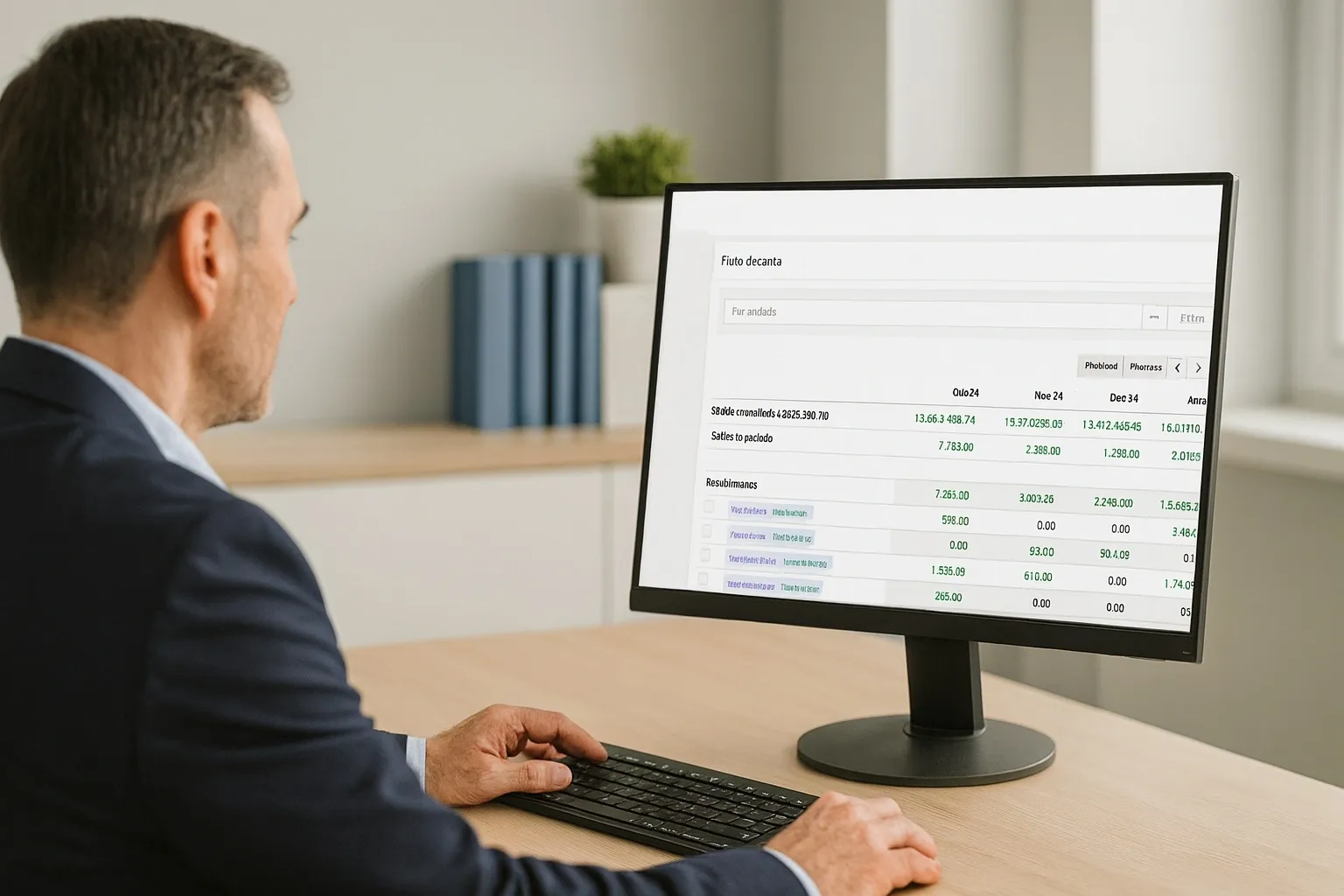
Many healthcare professionals master their medical specialties with excellence but face challenges when it comes to financial management. The lack of clear controls, structured processes, and strategic indicators can compromise not only profitability but also the long-term sustainability of the clinic.
This is where technology becomes essential. Ninsaúde Clinic centralizes scheduling, electronic health records (EHR), insurance billing, financial management, CRM, and more in a single platform. This allows managers to have an integrated view of their clinic and access reliable reports to make data-driven decisions.
Before we continue, we need to ask: Are you already familiar with Ninsaúde Clinic? Ninsaúde Clinic is a medical software with an agile and complete schedule, electronic medical records with legal validity, teleconsultation, financial control and much more. Schedule a demonstration or try Ninsaúde Clinic right now!

Below, we present 10 key strategies to organize your clinic’s finances and boost profits with the support of Ninsaúde Clinic.
1. Financial Diagnosis of the Clinic
The first step in financial organization is to understand the current situation. This means analyzing cash flow, identifying seasonal trends, and calculating the profitability of each service offered. Clinics that know how much they spend and earn per procedure can quickly detect waste and pricing issues.
Ninsaúde Clinic simplifies this diagnosis by generating automatic reports that combine revenue, expenses, and appointment data. With a few clicks, managers can identify the main revenue sources and spot areas with the greatest financial impact.

2. Structuring Basic Financial Controls
Without basic controls, growth is unsustainable. Categorizing revenue and expenses, defining indicators, and tracking metrics such as average ticket size and profit margin are essential practices. This prevents managers from relying solely on intuition.
With Ninsaúde Clinic, all financial transactions can be recorded, categorized, and monitored in real time. Key performance indicators are always available, giving managers clarity on the clinic’s financial health.
3. Optimizing Billing
Insurance billing is one of the biggest pain points for clinics. Manual processes, delays, and errors in claims submission can lead to revenue losses. Standardizing billing processes helps reduce mistakes and accelerates reimbursement.
Ninsaúde Clinic integrates with insurance billing systems, streamlining claims management, reimbursement deadlines, and payment history. In addition, with Ninsaúde Pay, clinics can offer multiple payment options—credit cards, debit, and PIX—improving predictability and patient convenience.
4. Controlling Operational Costs
Operational costs represent a large portion of clinic expenses. Medical supplies, office materials, utility bills, and outsourced services must be reviewed regularly to avoid waste. Poor cost control can erode profit margins.
The inventory module in Ninsaúde Clinic ensures efficient supply management by tracking stock levels, expiration dates, and purchase history. This allows clinics to negotiate better contracts and avoid overstocking costly materials.

5. Staff Management and Commissioning
Healthcare professional compensation is a sensitive area in clinic management. Without transparency, doubts and conflicts may arise between doctors and managers. A structured commission system is crucial for motivating staff while protecting profit margins.
With Ninsaúde Clinic, managers can configure different commission models—by percentage, fixed value, or period. Automatic reports eliminate manual calculations and reduce errors, fostering trust and transparency among professionals.
6. Smart Pricing Strategies
Setting consultation and procedure prices requires more than checking competitors. It is necessary to factor in direct and indirect costs, professional time, equipment usage, and desired profit margins. Failure to do so may result in undercharging.
Ninsaúde Clinic provides detailed reports on service profitability. These insights help managers create pricing packages, discounts, or dynamic pricing models while maintaining competitiveness and financial sustainability.
7. Reducing Default and Late Payments
Late or missed payments are one of the biggest threats to predictable cash flow. Patients who delay payments can create financial instability, making it essential to implement clear billing policies and track overdue accounts.
With Ninsaúde Clinic, managers can access complete financial reports and identify overdue payments in real time. This visibility allows for better negotiation strategies with patients. When integrated with Ninsaúde Pay, payment tracking is automated, reducing errors and ensuring more reliable financial data.
8. Financial Planning and Projections
Clinics that do not plan their finances are always reacting to problems. Building monthly and annual projections helps anticipate challenges and prepare reserves for emergencies. Working with optimistic, realistic, and pessimistic scenarios strengthens financial planning.
Ninsaúde Clinic provides historical data and automatic cash flow projections, helping managers evaluate the impact of decisions such as hiring, expanding services, or purchasing new equipment.

9. Marketing and Patient Retention
Financial organization alone is not enough if patient flow is unstable. Strategic marketing increases revenue and provides the foundation for clinic growth. Additionally, retaining patients is far more cost-effective than acquiring new ones.
Ninsaúde Clinic includes an integrated CRM with sales funnel capabilities, enabling managers to segment patients, create targeted marketing campaigns, and measure ROI. Automated features, such as appointment reminders and email or WhatsApp campaigns, strengthen patient loyalty and reduce churn.
10. Continuous Monitoring and Open API Integrations
Financial management doesn’t end with organization—it requires continuous improvement. Reviewing indicators, benchmarking, and adapting strategies are crucial to long-term success.
Ninsaúde Clinic provides comprehensive dashboards with insights into revenue, profitability, overdue payments, and operational efficiency. Additionally, its open API enhances interoperability by allowing integrations with other systems already in use. This flexibility gives managers greater freedom and access to relevant information for sustainable growth.

Organizing clinic finances goes beyond controlling expenses: it creates a management model that sustains long-term growth. Combining best practices with technology gives managers clarity, predictability, and security.
With Ninsaúde Clinic, healthcare organizations of all sizes can centralize processes, automate workflows, and make data-driven decisions. The result: greater profitability, efficiency, and financial sustainability.
In addition, the platform empowers clinic leaders to shift their focus from operational bottlenecks to strategic planning. With automated processes and real-time dashboards, administrators gain time to concentrate on improving patient experience, expanding services, and strengthening the clinic’s market position. The reduction of manual work directly translates into higher productivity and a better allocation of resources.
Finally, the interoperability enabled by Ninsaúde Clinic’s open API gives clinics the flexibility to connect with other systems and external tools—such as BI platforms, laboratory software, or accounting systems. This means more accurate data, fewer silos, and faster decision-making cycles. By aligning technology with financial discipline, clinics are better prepared to achieve consistent growth, deliver quality care, and remain competitive in an increasingly complex healthcare environment.
Liked the information? Then prepare for a continuous journey of knowledge by following our blog. Are you a health professional and not yet familiar with the benefits of Ninsaúde Clinic? Stay ahead, optimize your processes, and elevate excellence in patient care!

